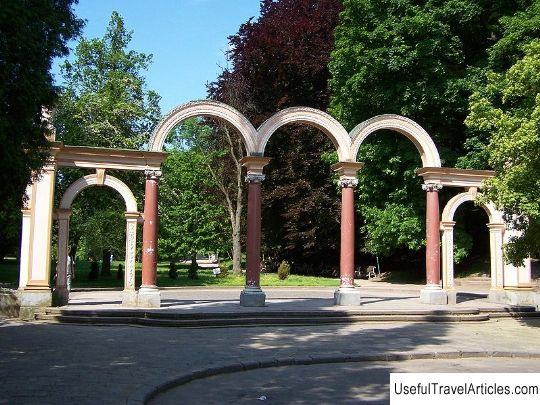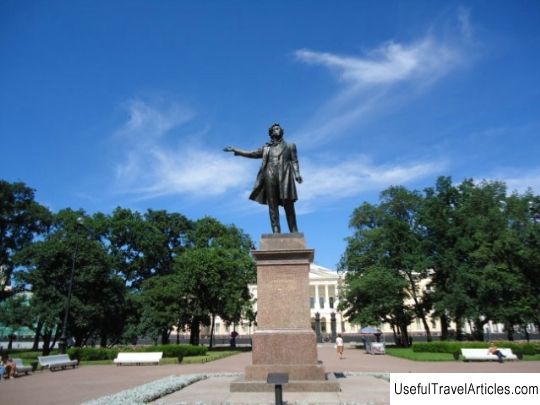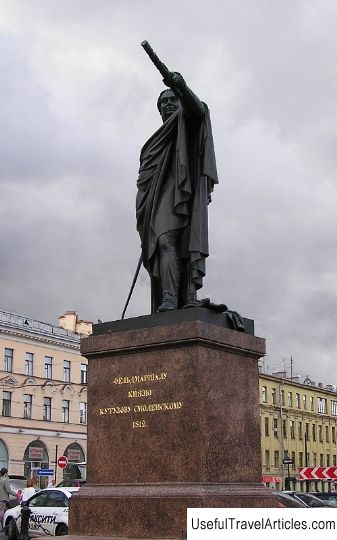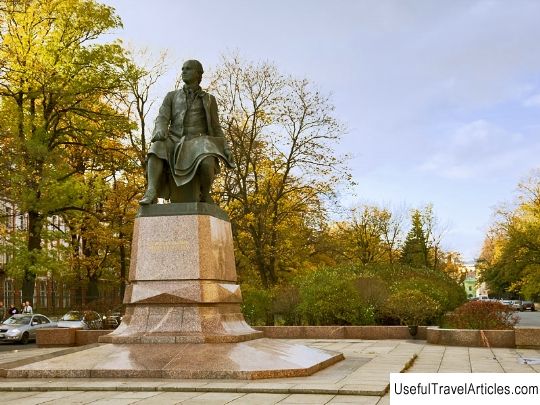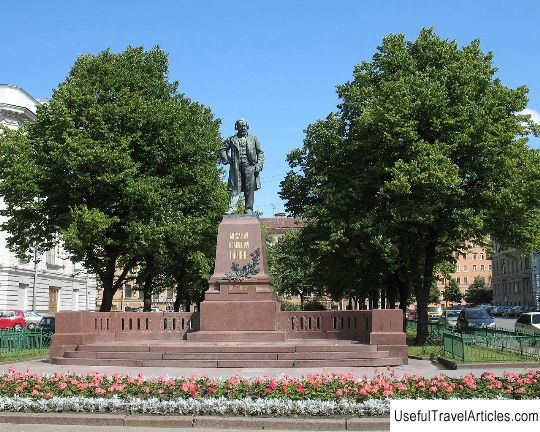Monument to I. A. Krylov description and photo - Russia - St. Petersburg: St. Petersburg
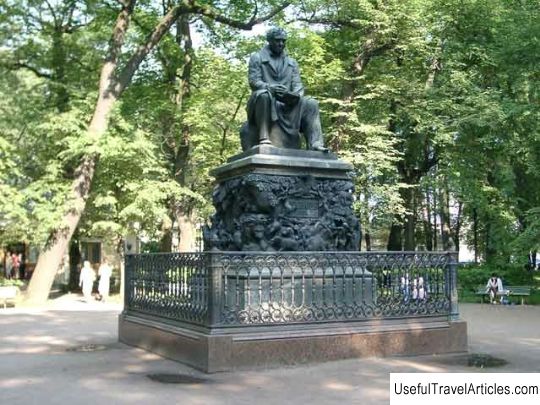
Monument to I.A. Krylov description and photo - Russia - St. Petersburg: St. Petersburg. Detailed information about the attraction. Description, photos and a map showing the nearest significant objects. Photo and descriptionIn St. Petersburg, on the Kutuzov embankment, in one of the alleys of the Summer Garden, in 1855, a monument to the great Russian fabulist Ivan Andreevich Krylov was unveiled. This monument is the second of the monuments to Russian writers in Russia. Immediately after the death of I.A. Krylov, in November 1844, the editorial office of the Petersburg Vedomosti newspaper announced the collection of funds for the construction of the monument. By 1848, more than 30 thousand rubles were collected. The St. Petersburg Academy of Arts announced a project competition. The work of the animal sculptor Baron P.K. Klodt. Preliminary sketches of the sculpture of the fabulist and reliefs dedicated to the subjects of his fables belong to the artist A.A. Aginu, who stood at the origins of realism in Russian illustration. In the spring of 1852, a large model of the monument was presented at the Academy of Arts. Forming began in May 1853. Klodt himself was directly involved in the casting of the monument. The statue was cast entirely, which speaks of Klodt's great skill in bronze casting. Ivan Andreevich Krylov is depicted in the monument in everyday clothes, a long-length frock coat, which he wore in the last years of his life. He sits at ease, holding an open book in his hands. The look is directed forward, the expression on his face is as if concentrated - the elderly man sat down to rest and thought. Perhaps about the plot of a new fable? The height of the statue of the fabulist is 3 meters. Compared to her, the pedestal is small. On all four sides, it is covered with figures of animal heroes of fables, made of bronze. Work, associated with these figures was extremely laborious and time consuming. Since P.K. Klodt firmly adhered to the ideas of realism; there are no allegories or hints in animal sculptures. They are depicted truthfully and lovingly, as they are in real life. For four years, while the foundry masters were engaged in their manufacture, in the workshops in cages, on a leash or without restriction of freedom, various animals were kept, which served as prototypes of sculptural statues. In this impromptu menagerie there were, for example, a bear and bear cubs sent from the Novgorod province, a tamed wolf, which from time to time still hunted cats, a donkey, a crane, a fox, a lamb. After the work was completed, Klodt transferred all the animals from the foundry to Zama's menagerie. Ivan Andreevich Krylov wrote about 300 fables in his life. 36 of them are presented on the pedestal of the monument. The site of the monument was not chosen immediately. There were proposals to put it on the grave of Ivan Andreevich in the Alexander Nevsky Lavra, in the park near the Public Library, where he worked for almost 30 years, on the embankment of the Neva. Baron Klodt insisted on the place in the Summer Garden. One of the reasons was the following. Once in the Summer Garden there were many outlandish constructions that were loved by both adults and children. At the time of Peter I, there was a large green labyrinth, at the entrance to which there was a statue of Aesop, the great fabulist of antiquity. Nearby were sculptures of characters from his fables and under each plate with a summary of each and explanations of hints and allegories. This magnificent piece of art has been lost. All that remains of it is the name of the Fontanka River, given in honor of the beautiful fountains near the labyrinth, which were destroyed by the flood of 1777. Therefore, it was logical, after half a century, to erect a monument to the great fabulist of our time in that place. 20 years later, after the opening of the monument to Ivan Andreevich Krylov, he was fenced with a metal fence made in the eclectic style. In the 60s of the 20th century, the monument was restored.         We also recommend reading Noravank monastery description and photos - Armenia Topic: Monument to I. A. Krylov description and photo - Russia - St. Petersburg: St. Petersburg. |
